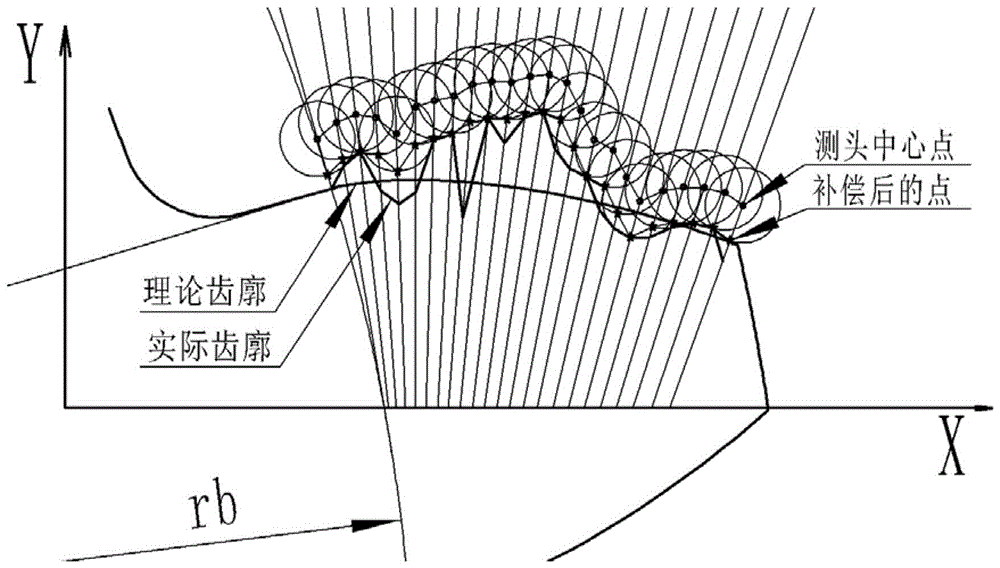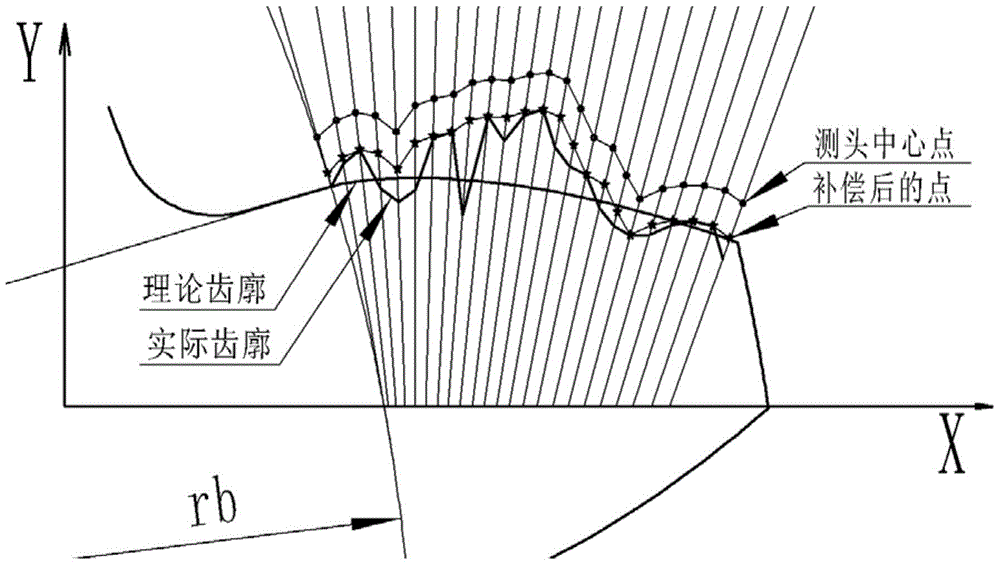A Quasi-Morphological Filtering Method for Extracting 2D Profiles in Touch Probe Measurement
A two-dimensional contour and quasi-morphological technology, applied in the direction of measuring devices, instruments, etc., can solve problems such as the increase in the maximum value of the probe radius compensation error, the inability to confirm the correctness of the normal direction, and the impact on the probe radius compensation accuracy.
- Summary
- Abstract
- Description
- Claims
- Application Information
AI Technical Summary
Problems solved by technology
Method used
Image
Examples
Embodiment Construction
[0033] The specific embodiment of the present invention will be further described below by taking the non-involute modified tooth profile measurement of spur gears as an example in conjunction with the accompanying drawings.
[0034] First, as a comparison, the general method of extracting the measured two-dimensional profile from the measurement data using the traditional probe radius compensation method is given as follows:
[0035] When using a trigger probe to measure the tooth profile on the measuring machine, in order to reduce the probe radius compensation error, it must be measured from the normal direction of each measured point on the measured tooth profile, that is, the normal direction of each measured point as the detection direction. However, before the actual tooth profile measurement, the actual normal direction of each measured point cannot be known. The processing method at this time is to calculate the theoretical method corresponding to each measured point ...
PUM
 Login to View More
Login to View More Abstract
Description
Claims
Application Information
 Login to View More
Login to View More - R&D
- Intellectual Property
- Life Sciences
- Materials
- Tech Scout
- Unparalleled Data Quality
- Higher Quality Content
- 60% Fewer Hallucinations
Browse by: Latest US Patents, China's latest patents, Technical Efficacy Thesaurus, Application Domain, Technology Topic, Popular Technical Reports.
© 2025 PatSnap. All rights reserved.Legal|Privacy policy|Modern Slavery Act Transparency Statement|Sitemap|About US| Contact US: help@patsnap.com



